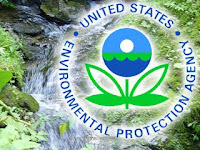
 In a speech today at the Association of Metropolitan Water Agencies (AMWA) annual conference in Washington, D.C., U.S. EPA Administrator Lisa P. Jackson announced the agency is developing a broad new set of strategies to strengthen public health protection from contaminants in drinking water. The aim is to find solutions that meet the health and economic needs of communities across the country more effectively than the current approach. EPA is also announcing a decision to revise the existing drinking water standards for four contaminants that can cause cancer.
In a speech today at the Association of Metropolitan Water Agencies (AMWA) annual conference in Washington, D.C., U.S. EPA Administrator Lisa P. Jackson announced the agency is developing a broad new set of strategies to strengthen public health protection from contaminants in drinking water. The aim is to find solutions that meet the health and economic needs of communities across the country more effectively than the current approach. EPA is also announcing a decision to revise the existing drinking water standards for four contaminants that can cause cancer.The new vision is meant to streamline decision-making and expand protection under existing law and promote cost-effective new technologies to meet the needs of rural, urban and other water-stressed communities. Specifically, this shift in drinking water strategy is organized around four key principles:
· Address contaminants as a group rather than one at a time so that enhancement of drinking water protection can be achieved cost-effectively.EPA’s current approach to drinking water protection is focused on a detailed assessment of each individual contaminant of concern and can take many years. This approach not only results in slow progress in addressing unregulated contaminants but also fails to take advantage of strategies for enhancing health protection cost-effectively, including advanced treatment technologies that address several contaminants at once. The outlined vision seeks to use existing authorities to achieve greater protection more quickly and cost-effectively.
· Foster development of new drinking water treatment technologies to address health risks posed by a broad array of contaminants.
· Use the authority of multiple statutes to help protect drinking water.
· Partner with states to share more complete data from monitoring at public water systems.
Stricter Standards Appropriate for Four Contaminants
 In the newly finalized review of existing drinking water standards, EPA determined that scientific advances allow for stricter regulations for the carcinogenic compounds tetrachloroethylene, trichloroethylene, acrylamide and epichlorohydrin. Tetrachloroethylene and trichloroethylene are used in industrial and/or textile processing and can be introduced into drinking water from contaminated ground or surface water sources. Acrylamide and epichlorohydrin are impurities that can be introduced into drinking water during the water treatment process. Within the next year, EPA will initiate rulemaking efforts to revise the tetrachloroethylene and trichloroethylene standards using the strategy’s framework. Revision of epichlorohydrin and acrylamide standards will follow later. As EPA looks at its new approach to addressing groups, the agency will consider whether revisions to these standards fit into that approach.
In the newly finalized review of existing drinking water standards, EPA determined that scientific advances allow for stricter regulations for the carcinogenic compounds tetrachloroethylene, trichloroethylene, acrylamide and epichlorohydrin. Tetrachloroethylene and trichloroethylene are used in industrial and/or textile processing and can be introduced into drinking water from contaminated ground or surface water sources. Acrylamide and epichlorohydrin are impurities that can be introduced into drinking water during the water treatment process. Within the next year, EPA will initiate rulemaking efforts to revise the tetrachloroethylene and trichloroethylene standards using the strategy’s framework. Revision of epichlorohydrin and acrylamide standards will follow later. As EPA looks at its new approach to addressing groups, the agency will consider whether revisions to these standards fit into that approach.Ongoing Regulatory Actions
There are ongoing efforts on 14 other drinking water standards. For example, EPA is considering further revisions to the lead and copper rule in order to better address risks to children. EPA also has ongoing health risk assessments or information gathering for chromium, fluoride, arsenic, and atrazine. EPA continues to consider whether to regulate perchlorate. When these efforts are complete, should additional action be required, EPA will move ahead to address any risks in an expedited manner.
More information on the strategy:
More information on the six-year review
No comments:
Post a Comment